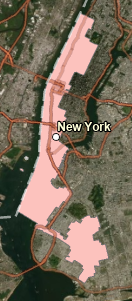FINAL PROJECT [GIS5027]: Locating Potential Beachrock Shelves in Dry Tortugas National Park Using Unsupervised and Supervised Classification Techniques on Aerial Imagery
Locating Potential Beachrock Shelves in Dry Tortugas National Park Using Unsupervised and Supervised Classification Techniques on Aerial Imagery
This final project specifically examined how unsupervised and supervised classification methods available in ERDAS Imagine could be used to locate potential beachrock shelf areas near Loggerhead Key in Dry Tortugas National Park, Florida. Near-shore beachrock shelves in this region serve as important habitats for juveniles of some fish species tolerant to the extreme conditions in these formations compared to adjacent coral reefs (Rummer et al., 2009). Monitoring of these sites is therefore relevant to understanding their importance as nurseries within reef ecosystems (Speaks et al., 2012). Automatic identification of these areas from satellite or aerial imagery avoids disturbing these sensitive habitats and can also be used for path planning the acquisition of lower cost imagery useful for continued management (Casella et al., 2017).
The results of the supervised classification on an aerial image from the FDOT Aerial Photo Look Up System are shown above. The yellow area in the submap in the bottom right corner indicates there was some success in identifying portions of the beachrock shelf area not used as part of training sets. The shore-based areas noted in brown and tan in the subimage represent some misclassifications between spectral signatures of man-made structures and sandy beach areas. One of the limitations of this project was that detailed ground truth for rockpool areas was not available. Having this information would allow a more in-depth analysis of these areas in particular, bearing in mind that water depth at the time of image acquisition would influence the results given the varying rockpool depths at low tide (0.001-0.22 m).
References:
- Casella, E., Collin, A., Harris, D., Ferse, S., Bejarano, S., Parravicini, V., ... & Rovere, A. (2017). Mapping coral reefs using consumer-grade drones and structure from motion photogrammetry techniques. Coral Reefs, 36(1), 269-275.
- Rummer, J. L., Fangue, N. A., Jordan, H. L., Tiffany, B. N., Blansit, K. J., Galleher, S., ... & Bennett, W. A. (2009). Physiological tolerance to hyperthermia and hypoxia and effects on species richness and distribution of rockpool fishes of Loggerhead Key, Dry Tortugas National Park. Journal of Experimental Marine Biology and Ecology, 371(2), 155-162.
- Speaks, J. E., Randall, C. J., Jimenez, A. G., Dabruzzi, T. F., Sutton, M. A., Pomory, C. M., & Bennett, W. A. (2012). Temperature tolerance comparisons among juvenile reef fishes from a beachrock nursery in Dry Tortugas National Park. Florida Scientist, 75(4), 242-248.




Comments
Post a Comment